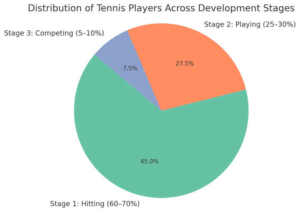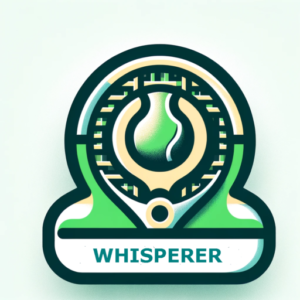Mastering the Three Pillars of Tennis Development
The Complete Player: Mastering the Three Pillars of Tennis Development
Hitting, playing, and competing in tennis are often misunderstood as one and the same. But each represents a distinct pillar of development, demanding specific skills, targeted training, and a progressive shift in mindset.
Mastery in one phase does not automatically guarantee success in the next. To become a complete player—one capable of winning at higher levels—you must intentionally grow through each stage, refining your technique, deepening your tactical awareness, and building the psychological resilience to perform under pressure.
Statistically, the progression narrows dramatically. Roughly 60 to 70 percent of players never move beyond the first stage. They strike the ball well but lack a strategic framework. Around 25 to 30 percent evolve into competent players who understand point construction and tactical variation. Only a small elite—perhaps five to ten percent—reach the third stage, where they can consistently execute under match pressure and adjust in real time.
The same pattern exists in coaching. An estimated 70 to 80 percent of tennis instruction remains focused on stroke production. While technical fluency is necessary, fewer coaches offer the kind of tactical guidance and psychological training required for true competitive development. Less than ten percent of coaches prioritize performance training that bridges the gap between knowing how to hit and knowing how to win.

Stage 1: Learning How to Hit the Ball
This is the technical foundation that supports everything that follows. The goal is to develop repeatable, efficient strokes and movement patterns that can stand up under the physical and time demands of competition. Key training elements include:
-
Clean contact and repeatable swing paths
-
Basic footwork patterns: cross-over step, split step, first step, recovery
-
Consistent contact point and spacing
-
Lower body balance and weight transfer mechanics
-
Use of simple, structured drills: basket feeding, shadow swings, and controlled hitting
-
Focus on body control, not power or deception
This stage emphasizes volume and repetition to build coordination, rhythm, and muscle memory.
This is the least glamorous phase, but also the one that determines whether you’ll be capable of rising to the next level.
Stage 2: Learning How to Play the Game
Once a player can reliably control the ball, they enter the second stage—learning how to play. This is where stroke production becomes decision-making.
Players begin to recognize tactical patterns, construct points, and manipulate tempo and geometry. They learn to adapt to different styles and surfaces while developing a playing identity, whether as an aggressive baseliner, counterpuncher, or all-court competitor. Training becomes more live-ball oriented, with scenario-based drills and feedback loops focused on intention, not just execution.
Stage 3: Learning How to Compete
The third and final stage—learning how to compete—is the most elusive. It’s the stage where players must perform their best when it matters most.
Here, the emphasis shifts to mental routines, emotional regulation, and psychological warfare. Players learn how to manage nerves, handle momentum swings, and recover from adversity.
Tools like breathing techniques, visualization, pre-point rituals, and methods such as the left-hand tennis ball squeeze—a proven technique to reduce choking under pressure—are implemented.
Training at this stage includes competitive sets, pressure simulations, and a deliberate focus on routine-building and decision-making under stress.
Ultimately, mastery in tennis is layered. A player with clean technique but no tactical understanding will lose to smarter opponents. A tactically sound player without composure will unravel in the clutch. And a mentally tough competitor without technical control will be limited in execution. True performance emerges only when all three pillars—hitting, playing, and competing—are developed together.
This progression is not automatic. It must be trained with purpose. The complete player builds the base, sharpens the mind, and hardens the edge.



